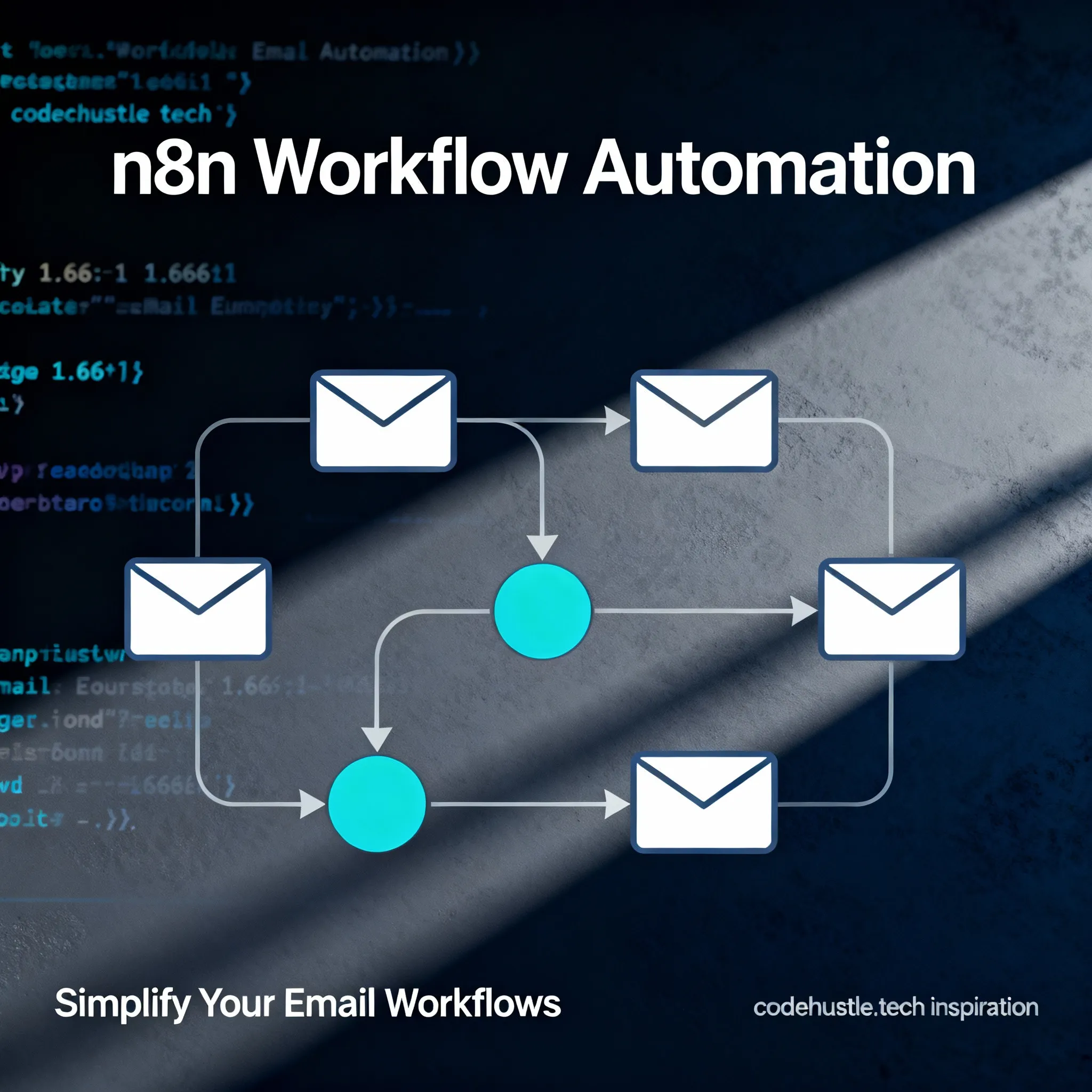Introduction
Web scraping is one of the most powerful techniques for extracting data from websites automatically. Whether you’re collecting product prices, gathering news articles, or building datasets for analysis, web scraping can automate tedious manual data collection tasks.
In this comprehensive guide, we’ll explore the fundamentals of web scraping using Python, covering everything from basic concepts to practical implementation with real examples.
Prerequisites
Before diving into this guide, it helps to have a few basics covered. You don’t need to be an expert, but having some foundational knowledge will make things easier to follow:
- Basic knowledge of Python programming
- Python 3.x and pip installed on your system
- Familiarity with HTML structure (tags and elements)
- Access to a terminal or command prompt
- Optional: Basic understanding of HTTP requests and responses
What is Web Scraping?
Web scraping is the process of automatically extracting data from websites. Instead of manually copying and pasting information, scraping allows you to programmatically collect data from web pages at scale.
Common Use Cases
- Price Monitoring: Track product prices across e-commerce sites
- News Aggregation: Collect articles from multiple news sources
- Real Estate Data: Gather property listings and market information
- Social Media Analysis: Extract posts and engagement metrics
- Research Data: Collect academic papers and citations
- Job Market Analysis: Monitor job postings and salary trends
Legal and Ethical Considerations
Before diving into the technical aspects, it’s crucial to understand the legal and ethical implications of web scraping.
Best Practices
- Check robots.txt: Always review the website’s robots.txt file
- Respect Rate Limits: Don’t overwhelm servers with rapid requests
- Review Terms of Service: Understand the website’s usage policies
- Use APIs When Available: Prefer official APIs over scraping
- Be Transparent: Identify your bot with proper User-Agent headers
Legal Guidelines
# Example: Checking robots.txt
import urllib.robotparser
def can_scrape(url, user_agent='*'):
rp = urllib.robotparser.RobotFileParser()
rp.set_url(url + '/robots.txt')
rp.read()
return rp.can_fetch(user_agent, url)
# Check if scraping is allowed
if can_scrape('https://example.com'):
print("Scraping is allowed")
else:
print("Scraping is not allowed")
Essential Python Libraries
Let’s start by setting up our scraping environment with the most important libraries.
Required Libraries
pip install requests beautifulsoup4 lxml pandas
Library Overview
- requests: For making HTTP requests
- BeautifulSoup: For parsing HTML and XML
- lxml: Fast XML and HTML parser
- pandas: For data manipulation and analysis
Your First Web Scraper
Let’s build a simple scraper to extract quotes from a practice website.
Basic Setup
import requests
from bs4 import BeautifulSoup
import time
import pandas as pd
# Set up headers to mimic a real browser
headers = {
'User-Agent': 'Mozilla/5.0 (Windows NT 10.0; Win64; x64) AppleWebKit/537.36'
}
def get_page(url):
"""Fetch a web page with error handling"""
try:
response = requests.get(url, headers=headers, timeout=10)
response.raise_for_status() # Raise an exception for bad status codes
return response
except requests.RequestException as e:
print(f"Error fetching {url}: {e}")
return None
Parsing HTML Content
def parse_quotes(html_content):
"""Extract quotes from HTML content"""
soup = BeautifulSoup(html_content, 'lxml')
quotes = []
# Find all quote containers
quote_divs = soup.find_all('div', class_='quote')
for quote_div in quote_divs:
# Extract quote text
text_elem = quote_div.find('span', class_='text')
text = text_elem.get_text() if text_elem else 'N/A'
# Extract author
author_elem = quote_div.find('small', class_='author')
author = author_elem.get_text() if author_elem else 'Unknown'
# Extract tags
tag_elems = quote_div.find_all('a', class_='tag')
tags = [tag.get_text() for tag in tag_elems]
quotes.append({
'text': text,
'author': author,
'tags': ', '.join(tags)
})
return quotes
Complete Scraper Example
def scrape_quotes(base_url, max_pages=5):
"""Scrape quotes from multiple pages"""
all_quotes = []
for page in range(1, max_pages + 1):
url = f"{base_url}/page/{page}/"
print(f"Scraping page {page}...")
# Fetch the page
response = get_page(url)
if not response:
break
# Parse quotes
quotes = parse_quotes(response.content)
if not quotes: # No more quotes found
break
all_quotes.extend(quotes)
# Be respectful - add delay between requests
time.sleep(1)
return all_quotes
# Usage example
base_url = "http://quotes.toscrape.com"
quotes_data = scrape_quotes(base_url, max_pages=3)
# Convert to DataFrame for analysis
df = pd.DataFrame(quotes_data)
print(f"Scraped {len(df)} quotes")
print(df.head())
Advanced Scraping Techniques
Handling Dynamic Content
Many modern websites use JavaScript to load content dynamically. For these sites, you’ll need Selenium:
from selenium import webdriver
from selenium.webdriver.common.by import By
from selenium.webdriver.support.ui import WebDriverWait
from selenium.webdriver.support import expected_conditions as EC
def scrape_dynamic_content(url):
"""Scrape content that loads with JavaScript"""
# Set up Chrome driver (you'll need to install ChromeDriver)
options = webdriver.ChromeOptions()
options.add_argument('--headless') # Run in background
driver = webdriver.Chrome(options=options)
try:
driver.get(url)
# Wait for specific element to load
wait = WebDriverWait(driver, 10)
content = wait.until(
EC.presence_of_element_located((By.CLASS_NAME, "dynamic-content"))
)
# Extract data
elements = driver.find_elements(By.CSS_SELECTOR, ".item")
data = [elem.text for elem in elements]
return data
finally:
driver.quit()
Handling Sessions and Cookies
import requests
class WebScraper:
def __init__(self):
self.session = requests.Session()
self.session.headers.update({
'User-Agent': 'Mozilla/5.0 (Windows NT 10.0; Win64; x64) AppleWebKit/537.36'
})
def login(self, login_url, username, password):
"""Handle login if required"""
# Get login page to extract CSRF token
response = self.session.get(login_url)
soup = BeautifulSoup(response.content, 'lxml')
csrf_token = soup.find('input', {'name': 'csrf_token'})['value']
# Submit login form
login_data = {
'username': username,
'password': password,
'csrf_token': csrf_token
}
response = self.session.post(login_url, data=login_data)
return response.status_code == 200
def scrape_protected_page(self, url):
"""Scrape pages that require authentication"""
response = self.session.get(url)
return response.content
Handling Rate Limiting
import time
import random
from functools import wraps
def rate_limit(min_delay=1, max_delay=3):
"""Decorator to add random delays between requests"""
def decorator(func):
@wraps(func)
def wrapper(*args, **kwargs):
delay = random.uniform(min_delay, max_delay)
time.sleep(delay)
return func(*args, **kwargs)
return wrapper
return decorator
@rate_limit(min_delay=1, max_delay=2)
def scrape_with_delay(url):
"""Scrape function with built-in rate limiting"""
response = requests.get(url, headers=headers)
return response.content
Data Storage and Processing
Saving to Different Formats
def save_data(data, filename, format='csv'):
"""Save scraped data in various formats"""
df = pd.DataFrame(data)
if format == 'csv':
df.to_csv(f"{filename}.csv", index=False)
elif format == 'json':
df.to_json(f"{filename}.json", orient='records', indent=2)
elif format == 'excel':
df.to_excel(f"{filename}.xlsx", index=False)
print(f"Data saved as {filename}.{format}")
# Usage
save_data(quotes_data, 'quotes', 'csv')
Data Cleaning and Validation
def clean_scraped_data(data):
"""Clean and validate scraped data"""
df = pd.DataFrame(data)
# Remove duplicates
df = df.drop_duplicates()
# Handle missing values
df = df.fillna('N/A')
# Clean text fields
df['text'] = df['text'].str.strip()
df['author'] = df['author'].str.title()
# Validate data
df = df[df['text'] != ''] # Remove empty quotes
return df.to_dict('records')
Error Handling and Robustness
Comprehensive Error Handling
import logging
from requests.adapters import HTTPAdapter
from urllib3.util.retry import Retry
# Set up logging
logging.basicConfig(level=logging.INFO)
logger = logging.getLogger(__name__)
class RobustScraper:
def __init__(self):
self.session = requests.Session()
# Set up retry strategy
retry_strategy = Retry(
total=3,
backoff_factor=1,
status_forcelist=[429, 500, 502, 503, 504],
)
adapter = HTTPAdapter(max_retries=retry_strategy)
self.session.mount("http://", adapter)
self.session.mount("https://", adapter)
def safe_scrape(self, url):
"""Scrape with comprehensive error handling"""
try:
response = self.session.get(url, timeout=10)
response.raise_for_status()
# Validate content
if 'text/html' not in response.headers.get('content-type', ''):
logger.warning(f"Unexpected content type for {url}")
return None
return response.content
except requests.exceptions.Timeout:
logger.error(f"Timeout error for {url}")
except requests.exceptions.RequestException as e:
logger.error(f"Request error for {url}: {e}")
except Exception as e:
logger.error(f"Unexpected error for {url}: {e}")
return None
Practical Project: News Article Scraper
Let’s build a complete project that scrapes news articles:
import requests
from bs4 import BeautifulSoup
import pandas as pd
from datetime import datetime
import re
class NewsArticleScraper:
def __init__(self):
self.session = requests.Session()
self.session.headers.update({
'User-Agent': 'Mozilla/5.0 (Windows NT 10.0; Win64; x64) AppleWebKit/537.36'
})
self.articles = []
def extract_article_links(self, homepage_url):
"""Extract article links from homepage"""
response = self.session.get(homepage_url)
soup = BeautifulSoup(response.content, 'lxml')
# Find article links (this would need customization per site)
article_links = []
for link in soup.find_all('a', href=True):
href = link['href']
if 'article' in href or 'news' in href:
if not href.startswith('http'):
href = homepage_url + href
article_links.append(href)
return list(set(article_links)) # Remove duplicates
def scrape_article(self, article_url):
"""Extract article content"""
try:
response = self.session.get(article_url)
soup = BeautifulSoup(response.content, 'lxml')
# Extract title (common selectors)
title_selectors = ['h1', '.headline', '.title', 'title']
title = None
for selector in title_selectors:
title_elem = soup.select_one(selector)
if title_elem:
title = title_elem.get_text().strip()
break
# Extract content (common selectors)
content_selectors = ['.article-content', '.post-content', 'article', '.entry-content']
content = None
for selector in content_selectors:
content_elem = soup.select_one(selector)
if content_elem:
content = content_elem.get_text().strip()
break
# Extract metadata
meta_date = soup.find('meta', {'property': 'article:published_time'})
date = meta_date['content'] if meta_date else None
meta_author = soup.find('meta', {'name': 'author'})
author = meta_author['content'] if meta_author else None
return {
'url': article_url,
'title': title,
'content': content[:500] + '...' if content else None, # Truncate
'author': author,
'date': date,
'scraped_at': datetime.now().isoformat()
}
except Exception as e:
print(f"Error scraping {article_url}: {e}")
return None
def scrape_news_site(self, homepage_url, max_articles=10):
"""Complete news scraping workflow"""
print(f"Scraping news from {homepage_url}")
# Get article links
article_links = self.extract_article_links(homepage_url)
print(f"Found {len(article_links)} potential articles")
# Scrape articles
for i, link in enumerate(article_links[:max_articles]):
print(f"Scraping article {i+1}/{min(max_articles, len(article_links))}")
article_data = self.scrape_article(link)
if article_data and article_data['title']:
self.articles.append(article_data)
time.sleep(1) # Be respectful
return self.articles
def save_articles(self, filename='news_articles'):
"""Save scraped articles"""
if self.articles:
df = pd.DataFrame(self.articles)
df.to_csv(f"{filename}.csv", index=False)
print(f"Saved {len(self.articles)} articles to {filename}.csv")
else:
print("No articles to save")
# Usage
scraper = NewsArticleScraper()
articles = scraper.scrape_news_site('https://example-news.com', max_articles=5)
scraper.save_articles('latest_news')
Performance Optimization
Concurrent Scraping
import concurrent.futures
import threading
class ConcurrentScraper:
def __init__(self, max_workers=5):
self.max_workers = max_workers
self.session = requests.Session()
self.lock = threading.Lock()
self.results = []
def scrape_url(self, url):
"""Scrape a single URL"""
try:
response = self.session.get(url, timeout=10)
# Process response...
with self.lock:
self.results.append({'url': url, 'status': 'success'})
except Exception as e:
with self.lock:
self.results.append({'url': url, 'status': 'error', 'error': str(e)})
def scrape_urls(self, urls):
"""Scrape multiple URLs concurrently"""
with concurrent.futures.ThreadPoolExecutor(max_workers=self.max_workers) as executor:
executor.map(self.scrape_url, urls)
return self.results
Monitoring and Maintenance
Health Checking
def check_scraper_health(url):
"""Check if target site is accessible"""
try:
response = requests.head(url, timeout=5)
return {
'status': 'healthy',
'status_code': response.status_code,
'response_time': response.elapsed.total_seconds()
}
except Exception as e:
return {
'status': 'unhealthy',
'error': str(e)
}
# Monitor multiple sites
sites_to_monitor = ['https://example1.com', 'https://example2.com']
for site in sites_to_monitor:
health = check_scraper_health(site)
print(f"{site}: {health['status']}")
Best Practices Summary
Do’s and Don’ts
✅ DO:
- Read and respect robots.txt
- Use appropriate delays between requests
- Handle errors gracefully
- Rotate User-Agent strings
- Monitor your scraping performance
- Clean and validate your data
❌ DON’T:
- Ignore rate limits
- Scrape personal or sensitive data
- Overwhelm servers with requests
- Ignore website terms of service
- Store unnecessary data
- Forget to handle edge cases
Production Deployment Tips
# Environment configuration
import os
from dotenv import load_dotenv
load_dotenv()
SCRAPING_CONFIG = {
'max_requests_per_minute': int(os.getenv('MAX_REQUESTS_PER_MINUTE', 30)),
'request_timeout': int(os.getenv('REQUEST_TIMEOUT', 10)),
'max_retries': int(os.getenv('MAX_RETRIES', 3)),
'user_agent': os.getenv('USER_AGENT', 'Mozilla/5.0...'),
}
Conclusion
Web scraping is a powerful tool for data collection, but it requires careful consideration of legal, ethical, and technical factors. By following the patterns and best practices outlined in this guide, you can build robust scrapers that collect data efficiently while respecting website resources and policies.
Key Takeaways
- Start Simple: Begin with basic requests and BeautifulSoup
- Be Respectful: Always follow rate limits and robots.txt
- Handle Errors: Build robust error handling and retry logic
- Stay Legal: Understand the legal implications of your scraping
- Optimize Performance: Use concurrent processing when appropriate
- Monitor Health: Continuously monitor your scrapers
Next Steps
- Explore Scrapy framework for large-scale projects
- Learn about proxy rotation and IP management
- Study anti-bot detection and countermeasures
- Practice with different types of websites
- Build automated data pipelines
Happy scraping! Remember to always scrape responsibly and ethically.
Need help with a specific scraping challenge? Share your questions in the comments below, and we’ll help you find the right solution.




Comments
Comments
Comments are not currently enabled. You can enable them by configuring Disqus in your site settings.